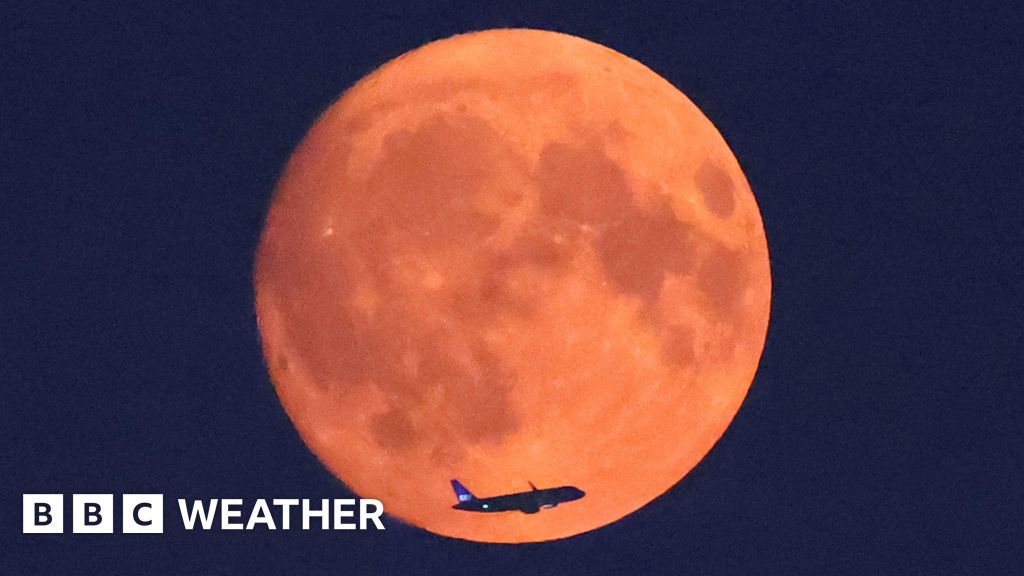
Blue Supermoon Turns Red: A Rare Celestial Event
On the evening of August 19, 2024, skywatchers across the UK were treated to a spectacular lunar phenomenon: the full supermoon, also known as a blue moon, not only graced the night sky but turned a dramatic shade of red. This celestial event, which occurred as the moon reached its perigee—the point in its orbit closest to Earth—was truly a sight to behold.
Despite its name, a blue moon does not actually appear blue. The term refers to the second full moon within a single calendar month, or, in some traditions, the third full moon in a season that has four full moons. This particular blue moon also coincided with a supermoon, making it exceptionally bright and large as it hovered close to our planet.
Also Read:- Jill Biden Reflects on Joe Biden's Decision to Step Aside at the DNC
- Title:Jill Biden Reflects on Joe Biden's Decision to Step Aside at the DNC
However, on this night, the moon's usual luminescent glow was obscured by an extraordinary twist. Instead of shining in its typical silver-white hue, the moon took on a deep red tint. This unusual coloration was due to the presence of smoke particles in the atmosphere from North American wildfires. As these particles scattered the light from the moon, they made the orange and red wavelengths more visible, transforming the moon into a fiery orb. The effect was further enhanced by the hazy, orange-tinted skies that prevailed over the weekend, culminating in a stunning sunset.
For those hoping to catch a glimpse of this celestial event, there was a limited window of opportunity. The full blue supermoon reached its peak fullness at 19:25 BST on Monday evening, and it rose around 20:50 BST in the east. It would then set on Tuesday morning at approximately 06:35 BST in the west. Unfortunately, the weather forecast suggested that many might not get a clear view due to cloud cover and patchy rain spreading across the UK. Nevertheless, there were moments when the skies cleared, offering fleeting but memorable views of the rare phenomenon.
This year's blue supermoon was the first of four such supermoons, with additional ones expected in September, October, and November. The October supermoon will be the closest of the year, making it another prime opportunity for moon enthusiasts to witness this spectacular event.
As for the blue moon’s terminology, it originates from a more traditional definition where any season with four full moons designates the third one as a blue moon. This historical context has given rise to the phrase "once in a blue moon," signifying a rare event.
So, while the moon may not have been blue, its red, supermoon appearance provided a breathtaking spectacle. For those who missed this rare event, the next opportunity to see a similar supermoon will be just around the corner.
Read More:

0 Comments